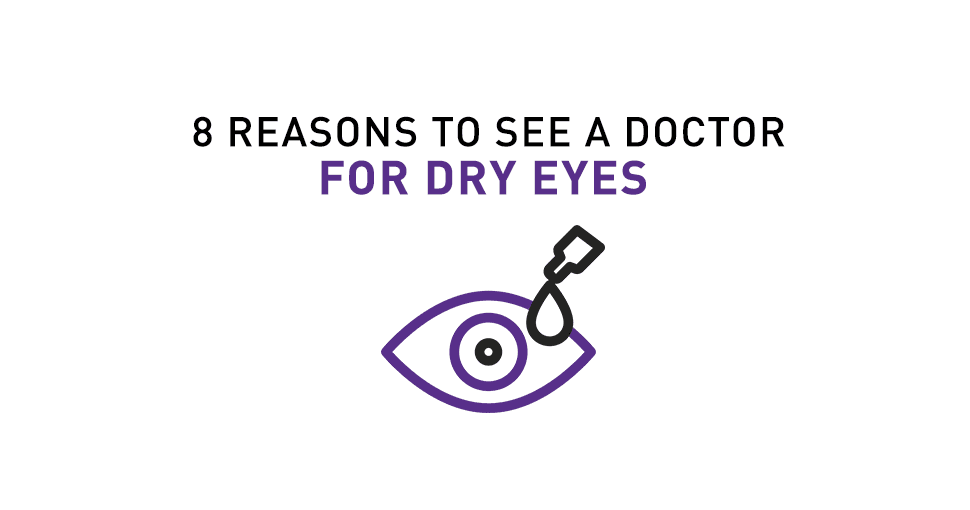
You may suffer from dry eyes even if you don’t think your eyes are dry! Dry eyes are a common condition that in some cases is temporary. Circumstances like staring at screens, allergies, flying in an airplane, or experiencing the Santa Ana winds can all be causes of temporary dryness. In those cases, using an artificial tear (and taking regular breaks from screens!) can be an effective way to improve the comfort of your eyes.
However, we want to explain that there are more significant and prolonged cases of dry eye which need medical treatment. There can be more symptoms of chronic dry eyes than just feeling dryness on the eye while blinking. Needing to use an artificial tear 3 or more times per day is a common sign, but these common problems can actually be a sign of dry eyes:
Symptoms that can indicate Dry Eyes
- Red eyes
- Eye fatigue
- Sensitivity to light
- Watery eyes – a sign your body is reacting to irritation by producing excess tears
- Difficulty with night time driving or blurred vision
- Contact lens discomfort
- End-of-day tension headaches
- Neck and shoulder stiffness
Risk Factors for Dry Eyes
There are a number of things that greatly increase your chances of developing dry eyes, such as:
- Digital device use more than 2 hours a day
- Aging or hormonal changes
- Certain medical conditions such as: diabetes, lupus, thyroid disorders, and rheumatoid arthritis
- Many commonly prescribed medications including: birth control, blood pressure medications, allergy medications, and anti-depressants
Some People Are More at Risk
Women tend to be more susceptible to dry eye than men, and being over the edge of 50 puts you at greater risk too. Not getting enough vitamin A can also increase your risk for dry eyes so be sure to get plenty of carrots, kale, and spinach in your diet! The anti-inflammatory properties of Omega-3 fatty acids have been proven to improve dry eye conditions. You can find omega-3s in fish, walnuts, flaxseed, and chia seeds.
Contact Us
If you experience any of these symptoms frequently or for longer than a week or two, you should schedule an appointment with your eye doctor. If dry eye goes untreated, it can become a chronic and progressive condition that puts you at risk for damaging the front surface of the eye, developing eye infections, and impacting your daily life by limiting certain activities or blurring your vision. Dry eyes are one of the most common reasons patients come into our office. There are different treatment options that target specific causes of dry eye so a treatment plan can be customized for you. Don’t suffer any longer; contact us to schedule an appointment to learn what treatment options are best for you.

